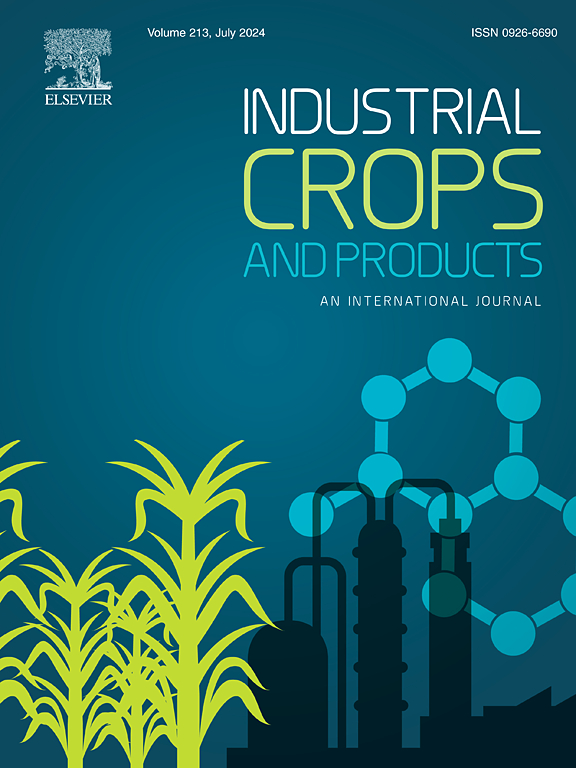Influence of environmental factors on α-tocopherol levels in Moringa oleifera extracts
IF 5.6
1区 农林科学
Q1 AGRICULTURAL ENGINEERING
引用次数: 0
Abstract
Moringa oleifera Lam. (Mo) seed and leaf extracts have shown promise as innovative cosmetic ingredients. First, this study examines extraction yield and chemical composition, using four techniques: supercritical carbon dioxide fluid extraction (SFE-CO₂), SFE-CO₂ with ethanol (EtOH), Soxhlet (SOX), and maceration (MAC). Among these, SFE-CO₂-EtOH achieved the highest yields, while SFE-CO₂ was most effective for extracting α-tocopherol from leaves and oleic and behenic acids from seeds, compounds valued for their antioxidant and emollient properties in cosmetics. Additionally, to assess the environmental impact on the plants and its influence on extraction outcomes, SFE-CO₂ leaf extracts were analysed across three harvest years. The α-tocopherol content (expressed relative to the mass of extract) showed considerable variability: approximately 148 mg∙g⁻¹ in 2021, 30.2 mg∙g⁻¹ in 2022, and 232.5 mg∙g⁻¹ in 2023. These fluctuations correlate with precipitation levels, as excessive rainfall in 2022 lowered yields, while low rainfall, combined with high humidity and mild temperatures in 2021 and 2023 promoted higher yields. Principal Component Analysis (PCA) identified precipitation and humidity as major factors influencing extraction yield and compound selectivity, while average temperatures remained stable. Overall, this study highlights the significant influence of environmental factors on the quality of Mo extracts and underscores the necessity of standardisation to achieve consistent levels of bioactive compounds. Implementing strategies such as controlled cultivation practices or use of standardised compounds is essential to ensure the production of extracts that meet the safety and efficacy standards required for cosmetic and pharmaceutical applications.

求助全文
约1分钟内获得全文
求助全文
来源期刊

Industrial Crops and Products
农林科学-农业工程
CiteScore
9.50
自引率
8.50%
发文量
1518
审稿时长
43 days
期刊介绍:
Industrial Crops and Products is an International Journal publishing academic and industrial research on industrial (defined as non-food/non-feed) crops and products. Papers concern both crop-oriented and bio-based materials from crops-oriented research, and should be of interest to an international audience, hypothesis driven, and where comparisons are made statistics performed.
 求助内容:
求助内容: 应助结果提醒方式:
应助结果提醒方式:


